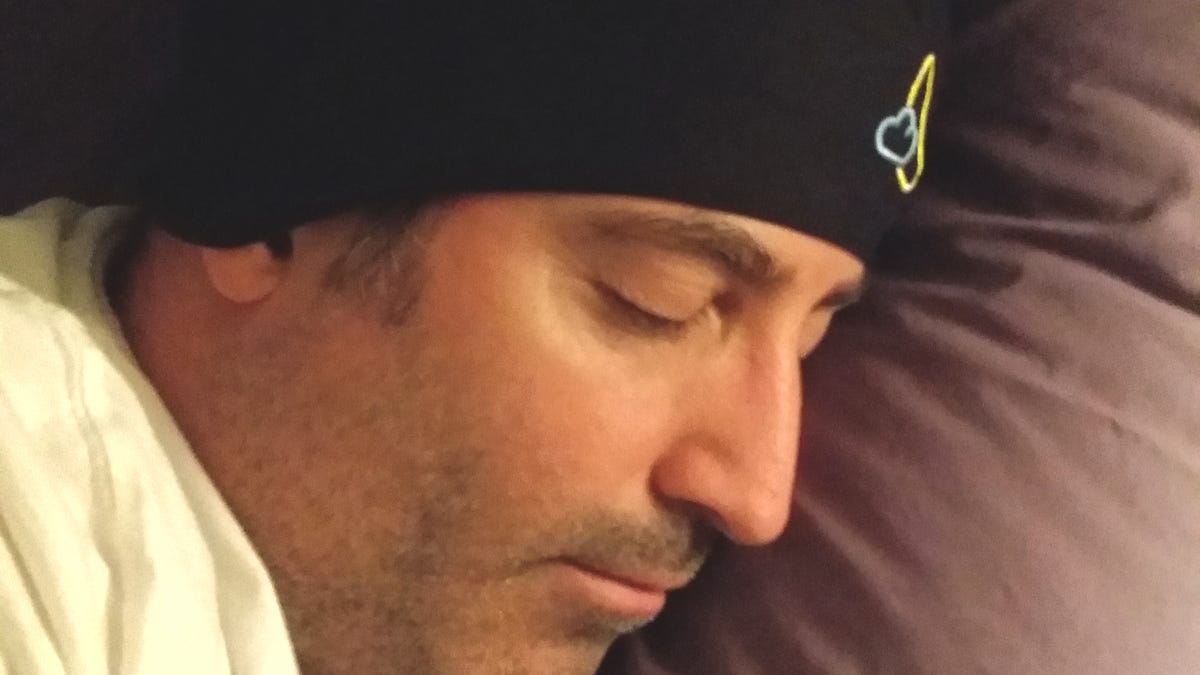 Why You Can Trust CNET
Why You Can Trust CNET Sleep hat tries to fight insomnia with noise in your ears
CNET's Michael Franco tests out the Sleep Shepherd, a nightcap that reads your brain waves and plays calculated tones in your ears.
I have trouble sleeping. To remedy that, I'm willing to try almost anything, including wearing a glowing hat to bed.
The Sleep Shepherd hat holds two speakers sewn into each earflap and a sensor that rests against your forehead. The idea is that the sensor monitors your brain waves and the speakers play tones that are meant to slow those waves down and lull you into sleep. The two speakers play slightly different tones.
"The rhythmic pulse you hear when wearing the Sleep Shepherd is actually your brain deciphering the difference in frequency between the two tones that are played into either ear," says the company. "This natural ability, contained within our brain's structure, creates a soothing sensation of swaying back and forth as though the wearer is in a hammock."
Unfortunately, I didn't exactly feel like I was in hammock. I felt more like I was inside a giant wine glass that someone was making hum.
I tried the sleep hat many times over the course of a few months, and it consistently failed to deliver me into slumber's arms. I first tried the hat in summertime and found it had the strange effect of amplifying the sound of my air conditioner, which didn't make for a restful night. Even in cooler months without the background whine of the A/C, I found the tone much more distracting than soothing.
The hat has a plastic box on top that contains the electronics. It charges via Micro-USB and has volume controls to control the intensity of the tone. Even playing with those controls, I couldn't find a level at which the hat would put me to sleep. I would occasionally doze off but would then wake in a few minutes to find the hat still buzzing like a menacing insect.
One night, I did manage to sleep for a few hours and found that the sensor did what it's supposed to, which is detect your calm brain waves and turn the tone off. When you wake up, it starts playing again. That's supposed to help you get back to sleep. It had me thinking, "Oh god, not this again."
Not only did the hat not help me to fall asleep, it interrupted my wife's sleep as well. For some inexplicable reason, the manufacturers decided to put a bright blue LED light on top of the hat to indicate that it's working. Whenever I turned over to face her, she got the beam in her face because I sleep curled in a fetal position. After a few nights of that, I was asked to take myself and my fetal position to another room.
To be fair, the Sleep Shepherd hat does seem to work for some people. The Amazon page for the product has about 50 percent positive reviews, 36 percent negative and the rest neutral. I suffer from tinnitus, a ringing in my ears, and a company representative told me that such a condition could definitely have affected the success of the hat.
Sleep Shepherd offers a 30-day money-back guarantee, so if you have trouble sleeping, it could be worth a try. The hat does cost a whopping $150 though, so you might just want to try the old method of counting sheep to springing for this Shepherd.


